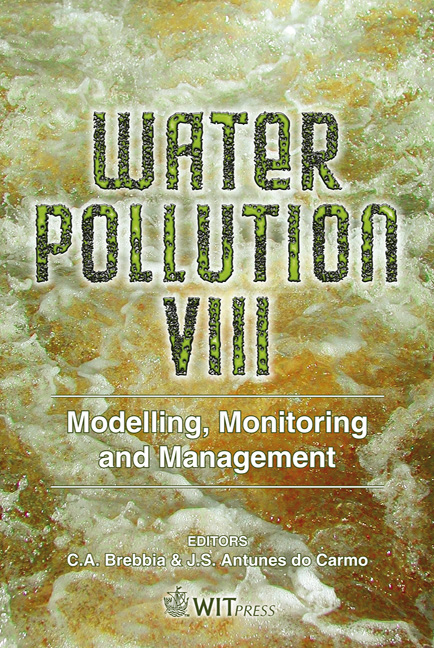An Improvement Of Cr+6 Removal By The Reduction To Cr+3 In Birjand Ground Water Treatment
Price
Free (open access)
Transaction
Volume
95
Pages
8
Published
2006
Size
440 kb
Paper DOI
10.2495/WP060201
Copyright
WIT Press
Author(s)
R. Heydarzadeh, A. A. Ghadimkhani & A. Torabian
Abstract
Birjand is a city in the east of Iran. Underground water is the only drinking water source, because this city is in a dry region. Ground water hexavalent chromium ion (Cr+6) concentration in Birjand is about 0.07 mg/l, which is higher than the maximum contamination level (MCL). The maximum contamination level of Cr+6 is 0.05 mg/l according to WHO guidelines. In an effort to comply with the World Health Organization (WHO) guideline regulations governing hexavalent chromium, Cr+6 was reduced to Cr3 through standard jar test procedures with the addition of ferrous sulphate as a reducing agent. This research studied this as a bench scale. In the first alternative, ferrous sulphate was just used as a reducing agent. A chromium concentration of 0.042 mg/l was reached in order to comply with WHO guidelines. But the addition of ferrous sulphate induced a sulphate ion (SO4 2- ) concentration increment of up to 430 mg/l, which is higher than the maximum contamination level according WHO guidelines (400 mg/l). In the second alternative, ferrous sulphate was used as a reducing agent with lime milk. A chromium concentration of 0.015 mg/l was reached with a sulphate ion concentration of 380 mg/l, which is less than the MCL (400 mg/l). Keywords: ground water, hexavalent chromium, sulphate, ferrous sulphate, reducing agent.
Keywords
ground water, hexavalent chromium, sulphate, ferrous sulphate, reducing agent.





